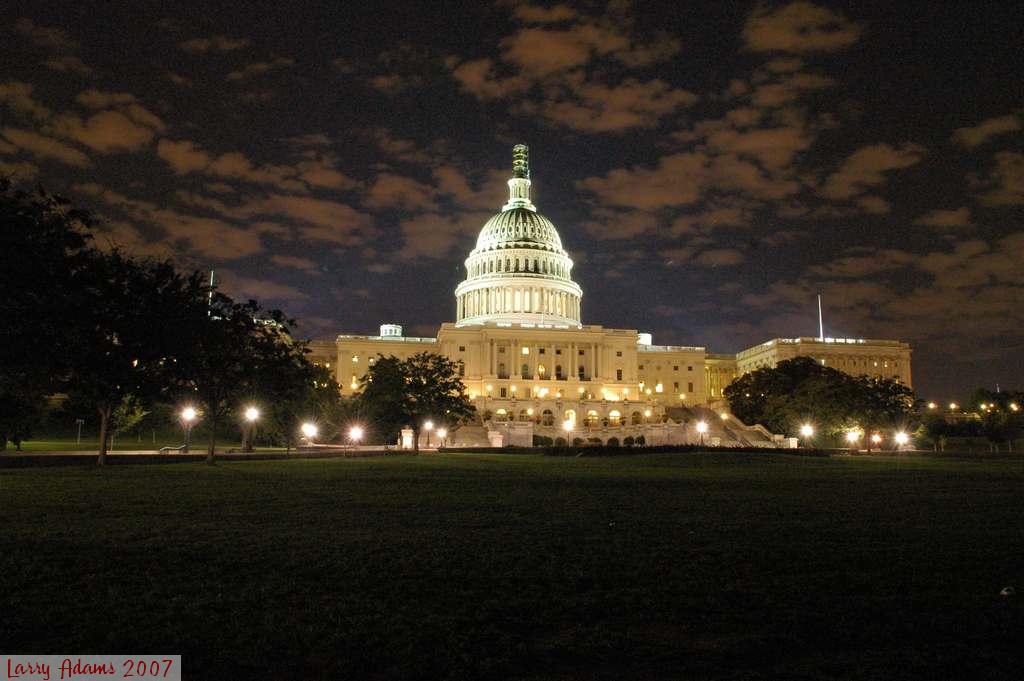Americans now rank “gridlock” as their top concern when it comes to the economy. We are reluctant to disparage the wisdom of the masses, but in this case they’re wrong. Gridlock, for lack of a better word, is good.
The new IBD/TIPP Poll asked “Which of the following poses the greatest risk to the current U.S. economy?”
At the top of the list was “gridlock in Washington” which 41% named as the greatest risk. Coming in second a good distance back was “trade disputes” at 26%. “Higher interest rates” came next at 12%, followed by “rising prices,” 9%, and “Special Counsel investigation” at 8%.
“Gridlock” came in first place among Democrats, Republicans and independents. Among the young and old. Men and women. North, South, East and West. Rural and urban. Wealthy and working class. Investors and non-investors.
In fact, the only group that the IBD/TIPP poll breaks out that didn’t rank “gridlock” first was liberals. More liberals named “trade disputes” as the biggest threat, with “gridlock” coming in second.
These days, it’s hard to find anything that all these different demographic groups will agree on.
But the truth is that they’re wrong. Gridlock is not a threat to the economy. If anything, at this point, it’s a potential blessing.
First, let’s dispel the notion that “getting things done” in Washington is a good thing.
In President Obama’s first two years in office, Democrats controlled the White House, and the House had a near supermajority in the Senate.
And what did that gridlock-free era produce? A trillion-dollar stimulus that failed to stimulate the economy. Huge increases in the national debt. A massive financial regulatory regime that acted like a millstone on the economy. It also produced ObamaCare, which disrupted millions of Americans who had health plans they liked, caused insurance premiums in the individual market to more than double, and still left 10s of millions uninsured.
In 2010, the economy eked out a 2.6% increase in real GDP, followed by an anemic 1.6% in 2011. In the two years after the recession ended, the economy created only 1.3 million new private-sector jobs. That was at a time when the working-age population increased by 3.8 million.
Given that the recession ended in mid-2009, those two years should have seen robust growth, which is what typically happens after a deep recession.
Gridlock has also proven to be an excellent way to keep federal spending under control.
From 2003 to 2007, for example, Republicans controlled both ends of Pennsylvania Ave.
During those years, federal spending climbed at an average annual rate of 7% a year.
That’s double the rate of spending growth that took place when Democrat Bill Clinton was in the White House and Republicans controlled Congress. The average spending increase from 2005 to 2011 was just 3.5%.
When Democrats controlled both branches of government in the first two years of Obama’s first term, spending climbed a total of 16%. In just two years! But when voters opted for divided government for the remaining six years of the Obama presidency, spending climbed at an average of just 1.9% a year.
Spending growth accelerated over the past two years — increasing 4% on average — when Congress and the White House were both in Republican hands. It’s on track to climb by almost 6% this fiscal year, which started before the midterm elections.
Now, it is true the Republicans managed to get a significant pro-growth tax cut through in those years. And that, as much as anything else, is why the economy has been doing so well. Gridlock, however, will keep those gains in place.
It is also true that gridlock means not dealing with entitlement programs that are consuming the budget and adding to the already gargantuan national debt. But even when Washington has been “getting things done,” the two parties remained deadlocked on Social Security, Medicare and Medicaid. It will take a crisis before both sides agree to reforms.
As we have been emphasizing for months in this space, the biggest risk to the economy this year is the Fed. After the last rate hike in December, we noted that “the Fed has plowed ahead with rate hikes, seemingly oblivious to their impact.” We added that “the Fed has significantly raised the chance of a downturn for President Trump — after keeping rates at record lows for the two terms of the previous president.” (For more on this, see: “Is The Fed Trying To Kill The Boom?”)
Yet just 12% listed “higher interest rates” as the greatest risk to the economy in the IBD/TIPP Poll.
Trade disputes — which 26% listed as their top concern — are another genuine risk to the economy. But Trump seems intent on getting a deal done with China that will, hopefully, make that issue largely evaporate.
It’s possible that prominence of “gridlock” as an economic risk in the IBD/TIPP Poll stems from the countless news stories warning that the partial government shutdown of the government will be an economic calamity if it continues. But as we noted in this space last week, while the shutdown might have a small impact on the economy in the short term, past shutdowns show that it will have none in the long term.
The bottom line is that, if gridlock reigns over the next two years — both in Congress and at the Fed — that will be good news indeed for the economy.
YOU MIGHT ALSO LIKE:
It’s A Shutdown, Not Armageddon
Trump Approval Climbs — IBD/TIPP Poll
We Could Build 2 Border Walls By Just By Eliminating ‘Improper Payments’ — Audit Shows

